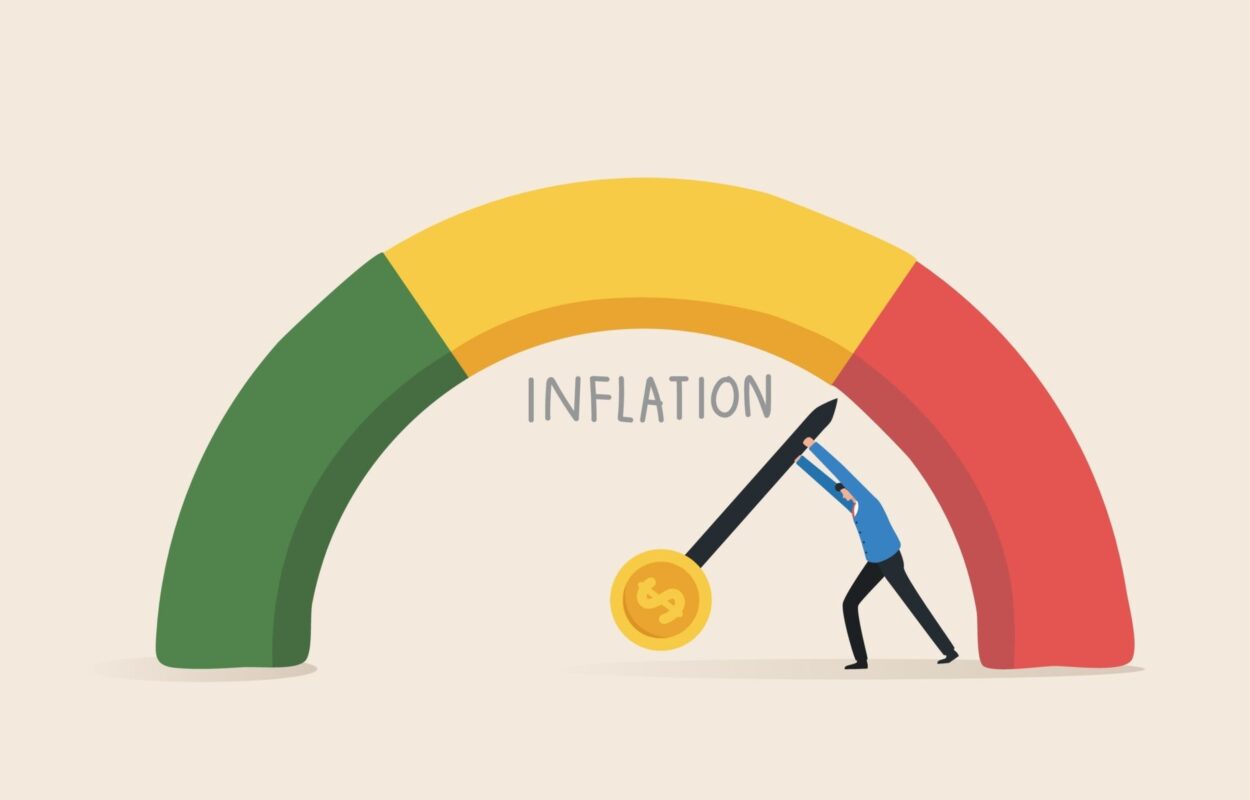
A small to mid-size business, or an SMB, is a totally unique animal and will react very differently to changes in the economy compared to a larger company. Today, as recession looms and financial hurdles keep appearing in front of U.S. businesses, it is the SMBs that fight the frontline.
We can see the ugly signs of recession showing themselves in the consumer price index, with prices paid for goods and services up 8.3% since August 2021. Inflation has been looming for a while and is now taking its toll on companies and buyers alike. For SMBs, which take more time to build up cash, the crush of the post-pandemic slowdown is dangerous.
Rising costs are just the surface of this economic crisis. The additional challenges of supply chain chaos, labor shortages, and soaring energy overheads are pushing SMBs to the edge. According to a survey of small business owners by Goldman Sachs, 91% are blaming broad economic trends for the losses and difficulties they’re facing.
What challenges does a recession pose to SMBs?
A recession can strike SMBs immediately and disastrously, and the impact that economic volatility has on them can show up much more severely than for large companies. Their challenges are many and are all interlinked.
- Rising prices. Inflation makes most things more expensive, so running a business demands more cash flow. Costs must be cut somehow in order to afford necessary overheads and supplies, but that isn’t always possible for an SMB.
- Inventory overages.This is a new trend, according to Goldman Sachs. Many companies overbought because they couldn’t get supplies and anticipated demand would stay the same. Now they need to possibly sell lower or find unique ways to use their inventory.
- Lower cash flow and decreased demand. Following the rising prices of inflation, lower cash flow makes investing in products and services more difficult. Meanwhile, buyers are experiencing lower cash flow, too, and many products and services are simply removed from their to-buy lists.
- Morale and motivation. A recession and its effects can be hugely damaging to any team. SMB teams, in particular, may find themselves with low morale due to lack of deals, sales, new prospects, and the need for leaders to cut costs. They may be more likely to suffer layoffs, for example, causing increased anxiety and further uncertainty. This could also lead their employees to become a part of the Great Resignation.
The need to evolve operationally and culturally is another facet of the unique challenge a recession poses to SMBs. Rising costs of overheads could push SMBs to move to different locations, smaller premises, or online. They may also be forced to reorganize operations and roles. They need to prepare for a new way to work — remote, office, shared spaces, etc., to meet staff preferences.
What we’ve heard from SMBs at this precarious point in our economy is that their progress is at a standstill, sales have declined, and the old way of doing things is not working. Evolution and preparation are key to keeping up with the market, staffing, supply, and a host of other constant changes.
Why does the recession affect SMBs so disproportionately?
A small business during a recession is a very different reality than a small business during more bull markets of “peacetime.” Recession affects SMBs so disproportionately because of several features that define what a small to mid-size business actually is.
The major problem is cash flow and momentum. While larger companies have access to a ready stream of cash to cushion the blow of economic volatility and allow them to maintain a pipeline of clients and projects, SMBs are forced to slow down or halt their production altogether. According to research by JPMorgan Chase, the average SMB has just 27 days’ worth of cash in reserve.
Revenue loss increases without that all-important cash cushion, making recovery increasingly more challenging. The strategies that worked in the past no longer work, and teams must reinvent their own wheel in order to keep going. But with longer sales cycles and fewer deals, it’s harder to have confidence that a product is meeting client needs.
If SMB leaders can work to understand how recession impacts them, they will be far better prepared for its losses and slowdowns.
What mistakes do SMBs tend to make during times of recession?
Business leaders tend to either take a lot of action very quickly or avoid taking any action at all during a crisis. Here are some of the most common mistakes SMBs make leading up to or during a recession:
They avoid making emergency or pivot plans.
A recession pushes cash flow and demand to their worst limits, and a wise small business makes a plan for this eventuality. Preparing your small business for a recession isn’t easy, and real-time conditions will vary while requiring different kinds of action. But if SMBs fail to prepare in some (or any) way, they’re preparing to fail.
They shrink their ambitions.
A fight-or-flight mentality is responsible for some of the mistakes made by SMBs in a recession. Lack of demand, staffing shortages, and cash flow are frightening conditions for small business owners and can encourage them to sit tight, cut costs, and try to weather the storm. But without making conscious investments in products, research and development, staffing, or making new goals, SMBs will miss opportunities to grow quickly. While credit avenues can be limited for small businesses, accessing new funds could be an important step in overcoming a recession in a strong position.
They forget what they’re good at.
Business leaders often vote for switching strategies in a recession. If they’ve been differentiators historically, they will switch to a more cost-leadership strategy, trying to compete with price slashing. But according to data from the 2008 recession, neither focusing on cost reduction nor focusing on quality differentiation will work on its own — the strategy must be aligned thoughtfully to a business’s overall goals.
These are just some of the mistakes that lead SMBs to not only react poorly to an incoming recession, but fail to adequately reassess the changes they need to make to their operations, teams, and business models. Even if mistakes are made, there are ways small businesses can mobilize in the face of challenges — using a recession to double down on what they do best.
How can a small business survive the recession?
Of course, it’s entirely possible for SMBs to survive an economic crisis. With the challenges mounting and morale shaky, leaders need to face up to the potential impact of the recession on small businesses and prepare their teams to take clear strategic action.
Here are five steps for small to mid-size businesses that are afraid to act for fear of being swallowed up by the effects of the recession to consider:

Step 1: Review
Part of the problem of acting in a recession is fear. But your initial step needn’t be a fearful one. Leaders should simply set aside time to review what’s happening. This could include questions about what the market is doing. What are the competitive shifts that you’re seeing in your industry? What are your neighbors doing? Who seems to be doing really well? This could also include questions about your own buyers. What are they investing in and not investing in? What strategies worked with them?
Moreover, this review should look at the core state of your business. Who is on your team? What is the point of your business? Why did you start it in the first place? Has your customer changed?
Step 2: Reassess
The review stage should have given you a lot of information to work with. You can see how the world around your business is shifting and what core values you still have. Hopefully, the gap between those two things has become clearer, too.
Now is the time for a bold reassessment of what you want your business to be, considering this new environment. Who are your ideal clients? How does your customer now want to buy from you? At this stage, making a detailed description of your buyer persona is the most helpful thing you can do.
Once you know who your customers are as people, and what their worries are, you can begin to form a new idea of what your sales cycle should look like.
Step 3: Realign
By now, the next steps needed in order to solve buyers’ pain points while staying true to your core values and mission statement should be clear. The challenges of the recession remain, but you can now use data to drive change in an educated way.
Rethink your goals. Now is the time for data-powered goal-setting and realignment, not shrinking away from decisions. What aims will you work toward today that will reassure and re-energize potential buyers?
As you create new goals, your team will need to be at its strongest. This will take an investment in compensation plans, attention, and mutual goal-setting. It may also be wise to staff up and hire great talent that is suddenly available due to rapid job switching.
Step 4: Remove
Eliminating toxic or loss-inducing elements of your business is just as important as gearing up with talent and fresh goals. Simply adding won’t solve the problems that lead to costly mistakes. Some subtraction is necessary.
Remove bad ideas and defensive and protectionist stances. Remove ineffective processes and automate where possible so that human error is reduced and human brain power is unleashed to focus on real and current challenges and opportunities. Remove loss leaders, the products that are costing you money to produce but damaging your reputation in the market.
The hardest part of the removal stage will be removing team members from the work environment if they are not willing to go through this renewal process with you. If employees are not delivering or adapting, fill their positions with talent that will positively contribute to your new direction.
Step 5: Redirect
You know the direction you need to head in. It’s the one that will help buyers with their problems and will deepen the values your company is known for. Perhaps a pivot is overdue.
What new service or offering could you provide to help buyers with their current and near-future concerns? How can you provide much-needed relief or joy? How can you redefine your business model so that it goes along with the shifts happening in the market around you without being defined by them?
This may seem like question overload, but without sincere reflection time, any recession-fueled changes made to your small business will come from fear, reactiveness, and defensiveness. The results will not impact the buyer enough to change the profits tide.
It may help to picture those businesses that have managed to reframe their offerings in hard times. Club Vino, for example, pivoted from giving wine tastings at prestigious hotels to offering a virtual tasting experience in customers’ homes. Or Kidadl, a platform for booking family adventures that added free online activities to its menu. Thinking outside of the box for your small business product or service might mean evolving instead of retracting. And it may do more for your future success than you ever imagined it could.
It may feel like dreams are an expense a small business can’t stretch to right now, but dreaming is exactly the action that will enable the right kind of change. Sales Xceleration can help you light the fire of ambition back into your team.





